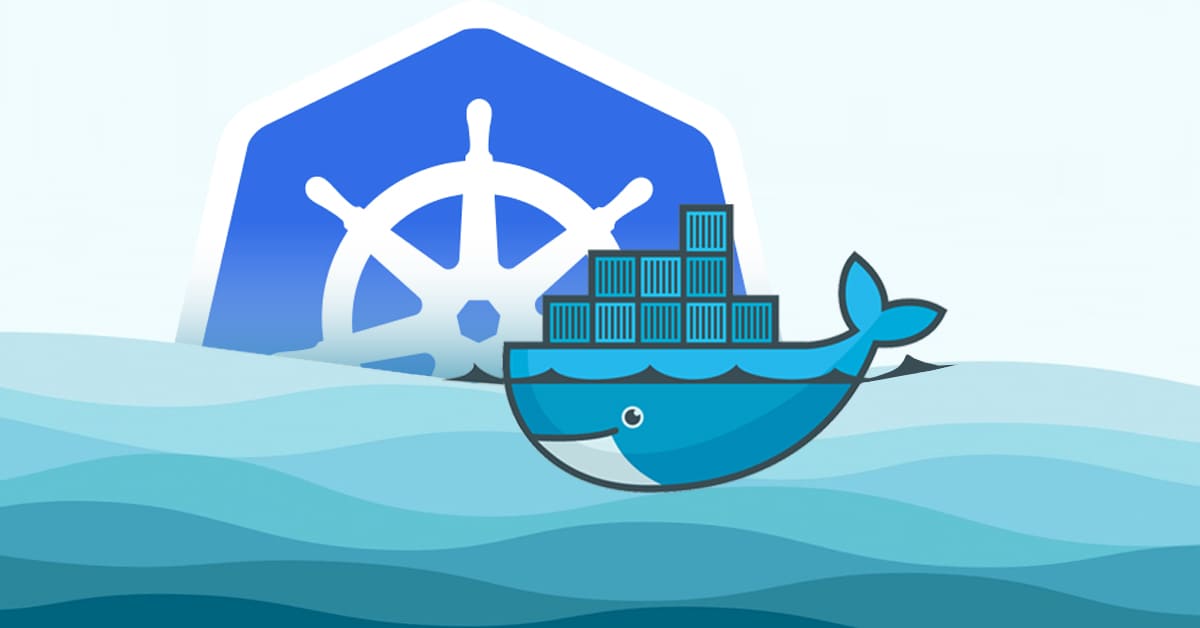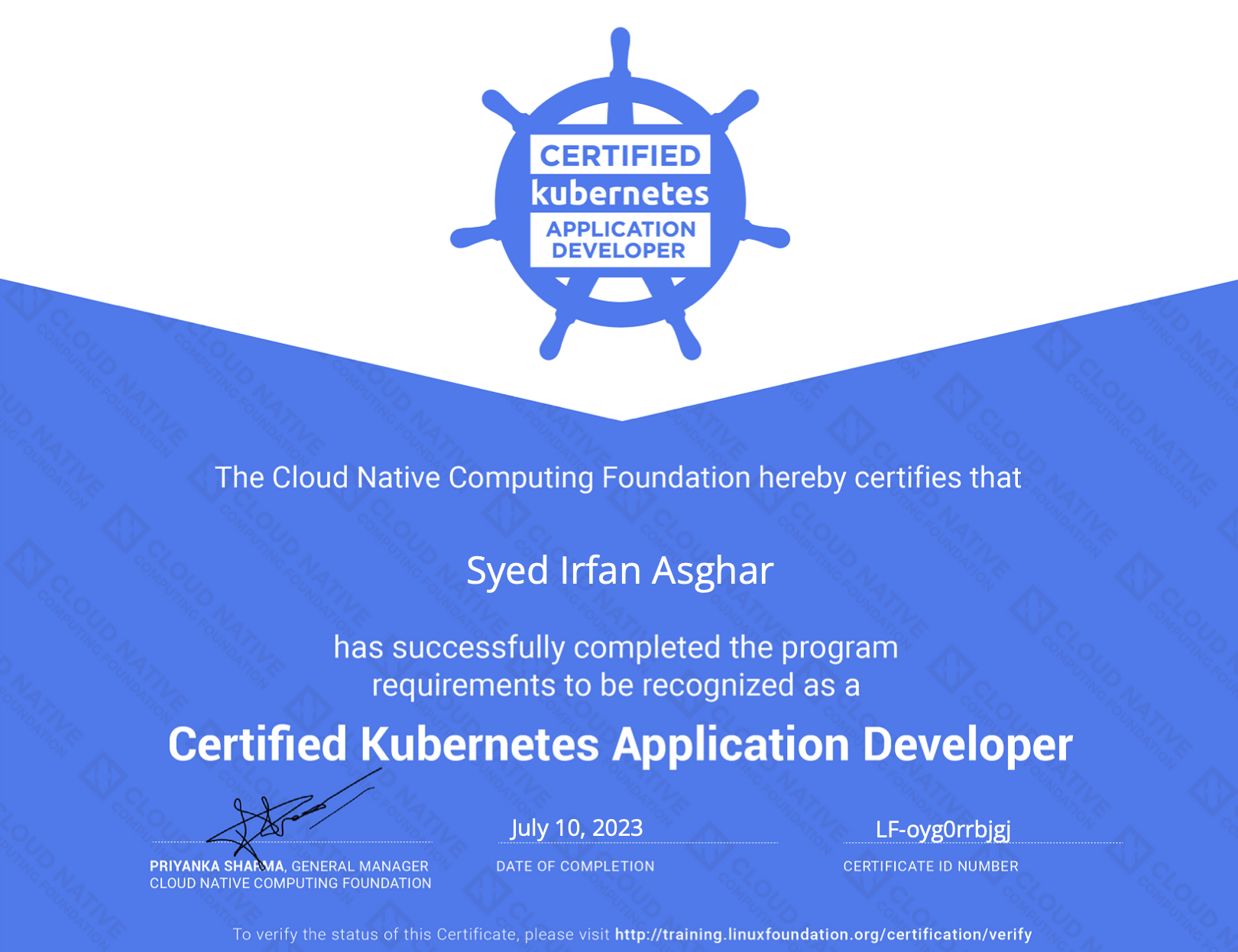My CKAD experience
 Syed Irfan Asghar
Syed Irfan Asghar
Unlike the other multiple-choice/select questions exams, Linux Foundation's Certified Kubernetes Administrator (CKA), Certified Kubernetes Application Developer (CKAD) and Certified Kubernetes Security Specialist (CKS) exams are the most sought-after exams as they are purely hands-on exams with a real lab environment testing your Kubernetes skills.
In this blog, I will detail the resources and tips that I used for preparing for the exam, the process of registering for the exam (including discount codes) and the experience of taking the exam.
Preparing for the exam 📖
Mumshad Mannambeth's course - undoubtedly the best learning resource available for CKAD is Mumshad Mannambeth's course on Udemy and KodeKloud. This includes a few practice tests (lightning labs and mock exams) that give you a sense of how the questions in the real exam might look like.
Kim Wüstkamp's simulator sessions on killer.sh - these are harder than the real exam and once you gain confidence with these sessions, it will put you in a very comfortable position for the exam. You get 2 free sessions once you register for the exam (more details on how to register later in the blog 👇). Take these sessions towards the end of your preparation phase and closer to the exam date.
(Optional) - If you are new to the container world, I'd highly recommend Docker Captain and CNCF Ambassador James Spurin's Dive into Kubernetes course. It is a great starting point with the right level of detail for the topics you should know to help kick-start your Kubernetes journey. The course is available on Udemy and Coursera for Business.
Aliases - the exam environment is already configured with a few aliases like the
kubectlwithkalias and Bash autocompletion. The complete list is available here.The only two invaluable aliases that need to be configured are:
# complement this with the `kubectl delete pod` command to instantly return the prompt
# example: kubectl delete pod nginx $now
export now="--force --grace-period 0"
# use a short hand alias to avoid typing this over and over as a lot of questions would require generating a yaml from imperative commands
# example: kubectl run nginx --image nginx:alpine $do > nginx.yaml
export do="--dry-run=client -o yaml"
- Indenting multiple lines - as you keep playing with YAML manifests, you will realise that there are often times when you need to indent certain lines in the file. Mastering how to indent multiple lines at once will save you a lot of time and highly decrease the chances of indentation errors.
To indent multiple lines press Esc and type :set shiftwidth=2. First mark multiple lines using Shift v and the up/down keys. Then to indent the marked lines press > or <. You can then press . to repeat the action.
Documentation lookup - CKAD and the likes is a pure hands-on exam. You are not expected to remember all the object declarations in the manifest files. During the exam, we are allowed to access the documentation at kubernetes.io/docs. However, given the time limitation, it is imperative to understand what to look for and how. Use this during all the practice exams to get used to looking up the documentation. The full list of allowed resources is available here.
Kubectl reference docs - apart from the above documentation, Kubectl Reference Docs is another great resource on the use of imperative commands. Imperative commands are a great time saver and come in very handy. Master the art of using imperative commands over declarative manifest files.
Registering for the exam ✍️
Do not wait for your preparation to complete to register for the exam. Exam registrations are valid for 12 months from the date of purchase and the exam can be scheduled within a short notice of 24-48 hours. The steps to register for the exam are detailed here.
Mumshad's Udemy course (linked above) has a 20% coupon (current coupon code: 20KLOUD) off the exam price of $395.
Linux Foundation also runs frequent campaigns that provide discounts on the exam price. Of these, the November Black Friday sale is the most prominent one. At the time of writing this blog, Linux Foundation is running a 40% discount campaign using the coupon code PRIME23 which is valid until July 12th, 2023.
On the day of the exam ⏱️
You are allowed to launch your exam 30 minutes before the scheduled time. This is to facilitate check-in, which includes photo ID verification and a scan of the room where you are taking the exam from. You are allowed only one display and the use of multiple monitors is prohibited.
I use a Macbook and intended to use an external monitor for the exam. This would however mean using an external keyboard, an external mouse and an external webcam since Macbook, unlike Windows, does not have the provision to only turn off the display and still use the keyboard and the inbuilt webcam. For this reason, I had to close the lid and rely on external accessories for the exam.
When I launched the exam to check in, the proctor was not able to capture a clear image of my photo ID and suggested I reach out to technical support and retake the exam. During my research for the exam, I had come across a tip of using a magnifying glass to capture the image of the photo ID but that was not helpful either. I made multiple attempts and lost an hour attempting to fix this.
In the fear of being asked to reschedule, I decided to disconnect the external display and webcam and proceed with my MacBook's webcam and display. I gave the exam on my 13" Macbook display and passed with flying colours. ✨✨✨
Subscribe to my newsletter
Read articles from Syed Irfan Asghar directly inside your inbox. Subscribe to the newsletter, and don't miss out.
Written by

Syed Irfan Asghar
Syed Irfan Asghar
Google Cloud DevOps Engineer at HSBC with expertise in CI/CD and Infrastructure automation.
